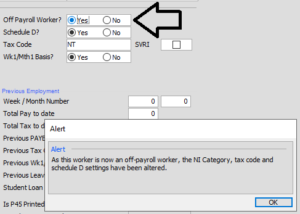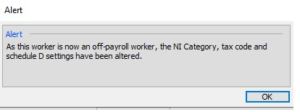What is IR35
HMRC introduced IR35 (or the ‘off-payroll working rules’) in 2000 to tackle what they call ‘disguised’ employment, i.e. individuals working through their own company, who would be employed if engaged directly, therefore having the right to all the tax breaks that those working under limited companies receive.
Unfortunately, the legislation in its original form was unenforceable, and in April 2017, the government introduced the ‘Off-Payroll Reforms’ to tackle non-compliance in the public sector. This shifted the responsibility for determining employment status from the individual working through the intermediary to the public authorities engaging them. The client, or public sector body, is also required to pay employment taxes on top of the fees paid to the contractor.
What is changing in April 2021?
From April 2021, the rules are due to change for contractors working with medium to large sized clients in the private sector. Like the public sector, clients will have to determine whether the contractor falls inside or outside IR35, deduct the right tax and National Insurance contributions and remit this directly to HMRC on behalf of the worker, through RTI.
Essentially, an organisation who takes on contractors is now responsible for deciding whether the rules should apply and making sure they and their workers pay the right tax. CEST (Check employment status for tax), which is HMRC’s online tool, helps determine whether a contractor is inside IR35.
If you’re a contractor and you’re ‘inside IR35’, your client (being the public sector company or large/medium sized private company) must treat you as an employee and must apply income tax and National Insurance, just as they do for regular employees.
If you are inside IR35, you the individual becomes an employee of the deemed employer even though you may be acting through an intermediary e.g. your own limited company. You may still remain employed by your intermediary, but any salary from this intermediary will now be exempt from employment taxes as these have already been deducted and paid by your client. The rules do not entitle you to employment rights in respect of your work for the client. Instead, they make sure that workers, who would have been an employee if they were providing their services directly to the client, pay broadly the same tax and National Insurance contributions as employees.
This measure is expected to impact 170,000 individuals working through their own company, who would be employed if engaged directly. Those who are complying with the existing rules should feel little impact.
Off-Payroll / IR35 in Moneypenny
Moneypenny will be able to cater for workers who are inside IR35. When setting up the worker as an employee, tick ‘off-payroll worker’ within the Taxation tab. This will disable entitlements that do not apply to contractors who fall inside the off-payroll working rules.


Once an employee is set up in Moneypenny as an off-payroll worker, some settings will be automatically disabled, including student loans, postgraduate loans.
For automatic enrolment, an alert will appear for off-payroll workers where the user can mark them as being exempt from auto enrolment. This will disable any automatic enrolment features that may appear for the off-payroll worker.
When a full payment submission has been created, it will automatically include details of workers who fall inside IR35, ready to send to HMRC.
CEST (Check employment status for tax)
What are off-payroll workers not entitled to?
Off-payroll workers are not entitled to receive or have deducted from their pay:
- Statutory payments: SSP, SMP, SAP, SPP, ShPP or Statutory Parental Bereavement Leave & Pay
- National Minimum Wage / National Living Wage rates
- Annual leave entitlement / holiday pay
- Student Loans or Postgraduate Loans
- Automatic enrolment pension scheme contributions
